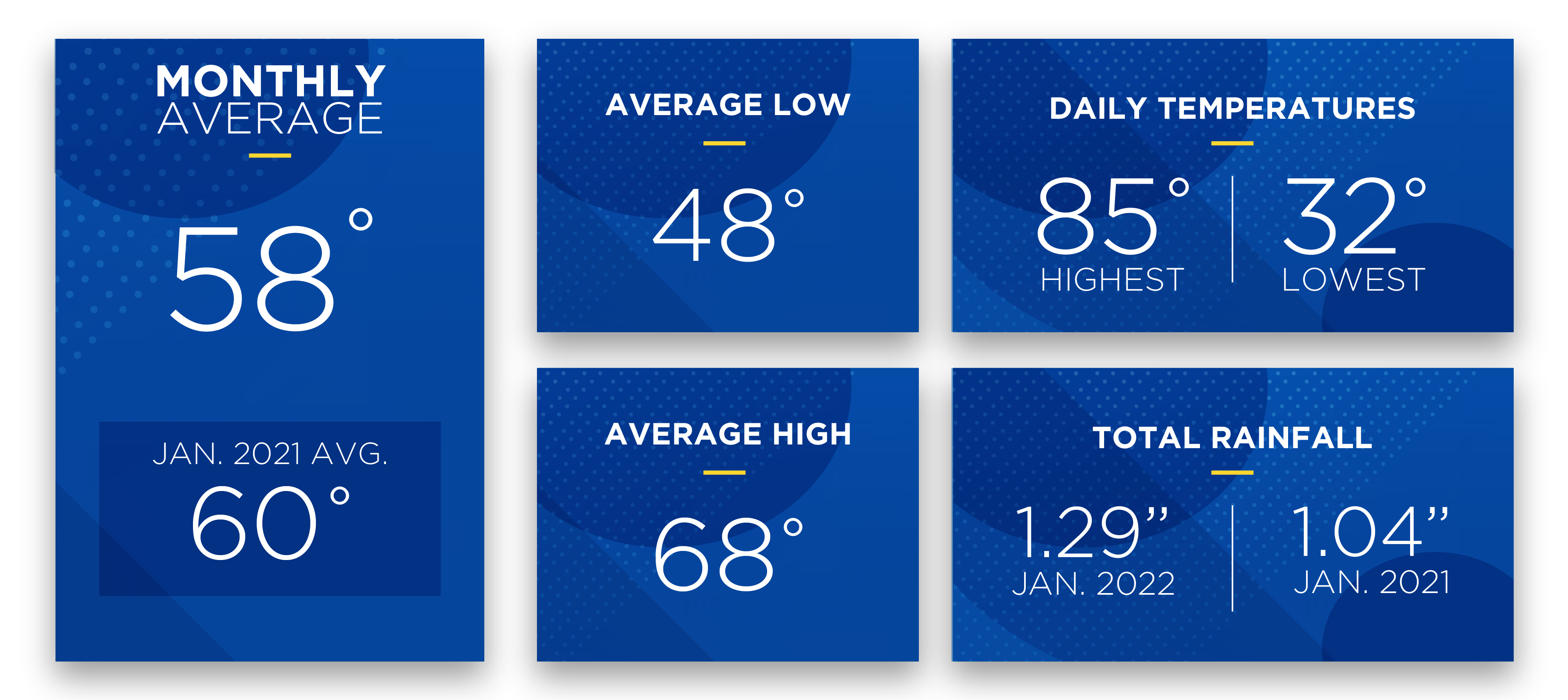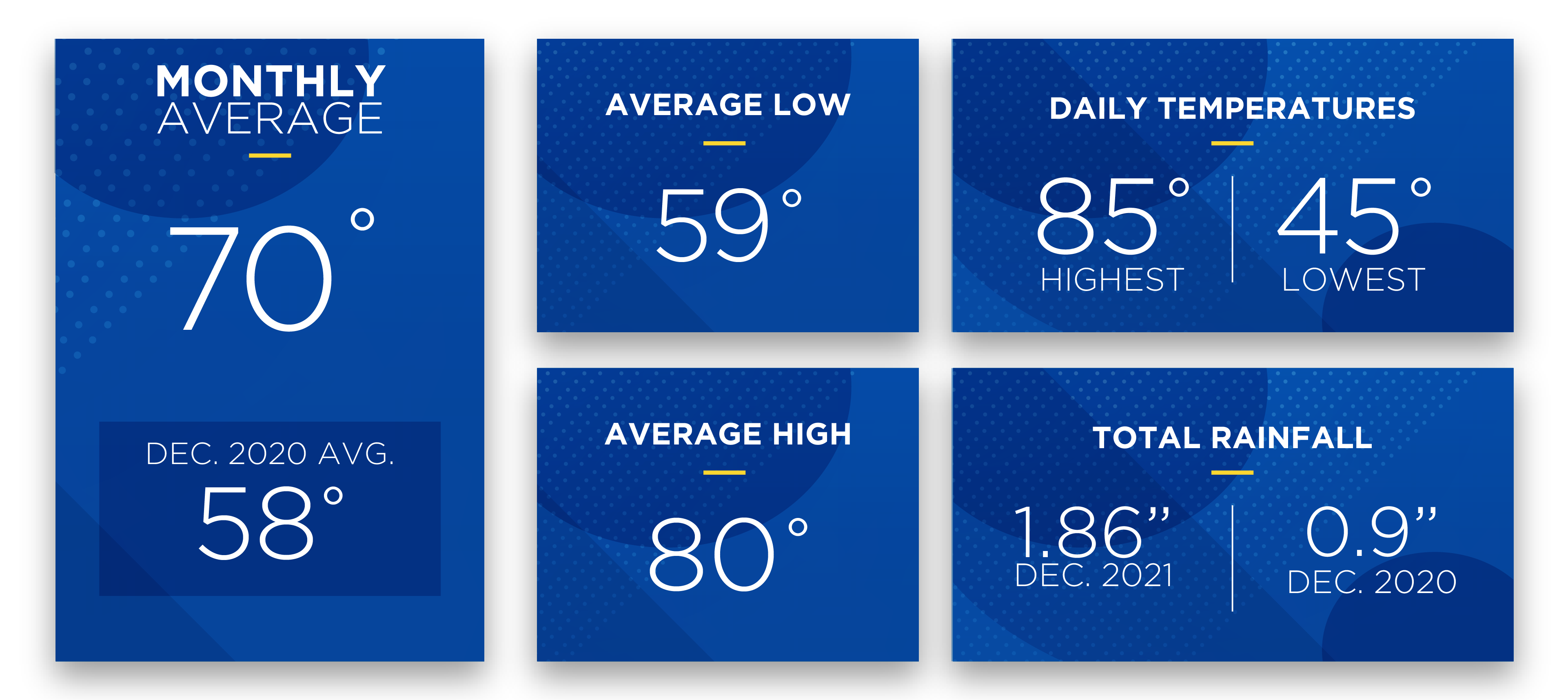January 2022 Sunshine State Stats
January 2022 ushered in the coldest temperatures of the winter season for Central Florida. The average temperature for the month was 58 degrees, which was 12 degrees colder than last month’s average. The average high was 68 degrees while the average low was 48 degrees.
The highest daily recorded temperature in January was 85 degrees and the lowest was 32 – the highest daily temperature was 85 in December 2021 as well, while the lowest recorded temperature was warmer at 45. January is starting with a rainfall deficit. This month rainfall measured only 1.29 inches while the average January rainfall is 3.32 inches.
January temperatures swung from very high to very low. Three days in the month reached over 80 degrees for the high daily temperature, while six days the low temperature dropped into the 30s.
With the fluctuating and extremely cold temperatures, members will likely notice their January energy usage increase from December 2021. The last weekend of January, portions of SECO’s service area experienced temps in the low 20s. To ensure electric grid stability and help conserve energy, SECO asked members to lower their thermostats to 65 degrees – 3 degrees lower than the ENERGY STAR recommended energy-efficiency heat setting. Over 8,000 members responded with photos of their thermostats to show compliance and curtailed household tasks like laundry and running the dishwasher to conserve.
February forecast:
The Old Farmer’s Almanac predicts a colder-than-average winter in Florida. Prepare for cold or freezing temperatures into early February. Precipitation will also be above average. For February 2021, expect rain early in the month. Daily highs will stretch into the 70s with lows in the 40s.
With temperatures running colder than average, your HVAC (heating, ventilation and air conditioning) unit may run longer and more frequently this year than in previous years. If you didn’t schedule an HVAC tune up, now is the time before temperatures warm up for spring and summer. Read December 2021 SECO News to learn more about scheduling an HVAC service.
To check historical usage, log into SmartHub to view past bills and consumption charts. If your usage is high, SECO offers several energy-efficiency tools to help you identify energy wasters. Take the Home Energy Assessment to receive a detailed email tailored to your home’s features and lifestyle. The energy-saving advice will provide low-cost ways to decrease your usage – and your electric bill.
To easily calculate how much energy your appliances, lighting, electronic devices, and other energy-using items in your home consume, use the Energy Estimator.






